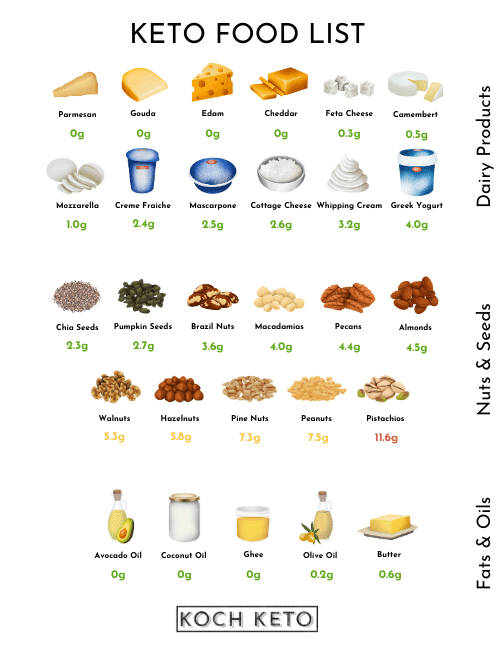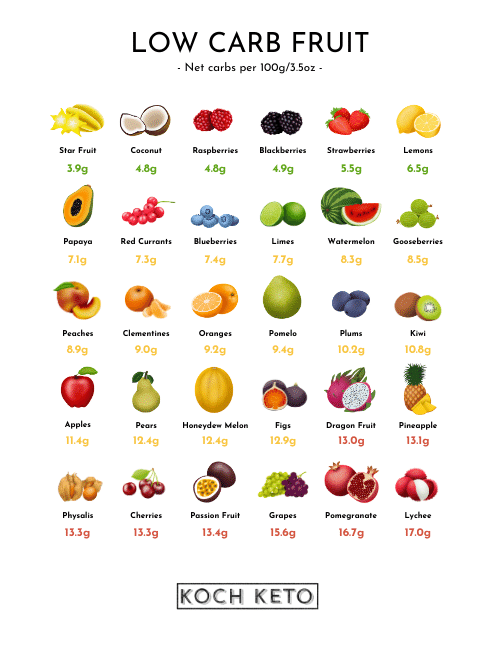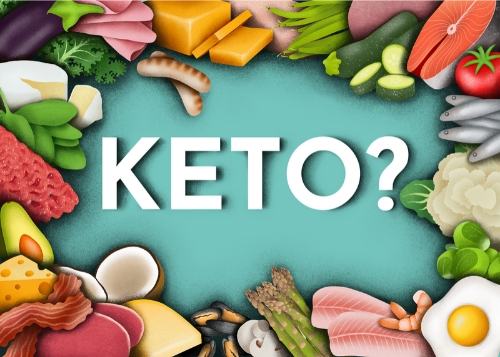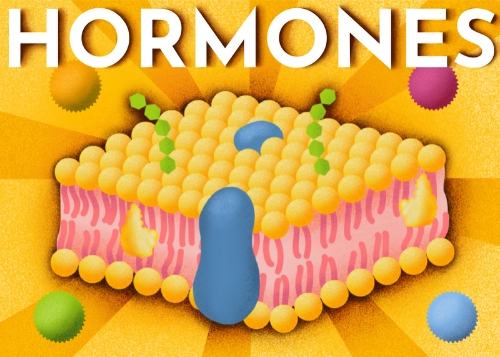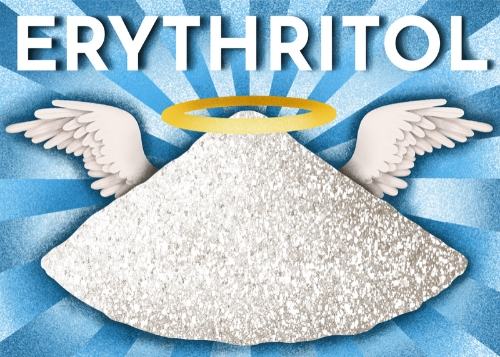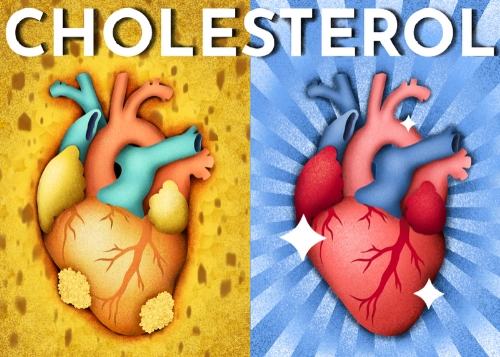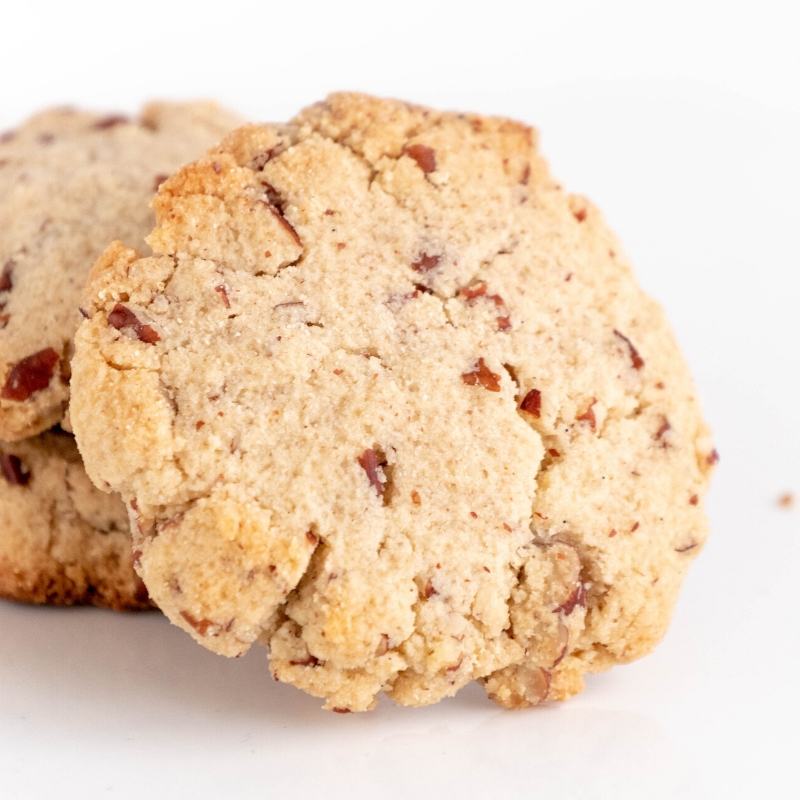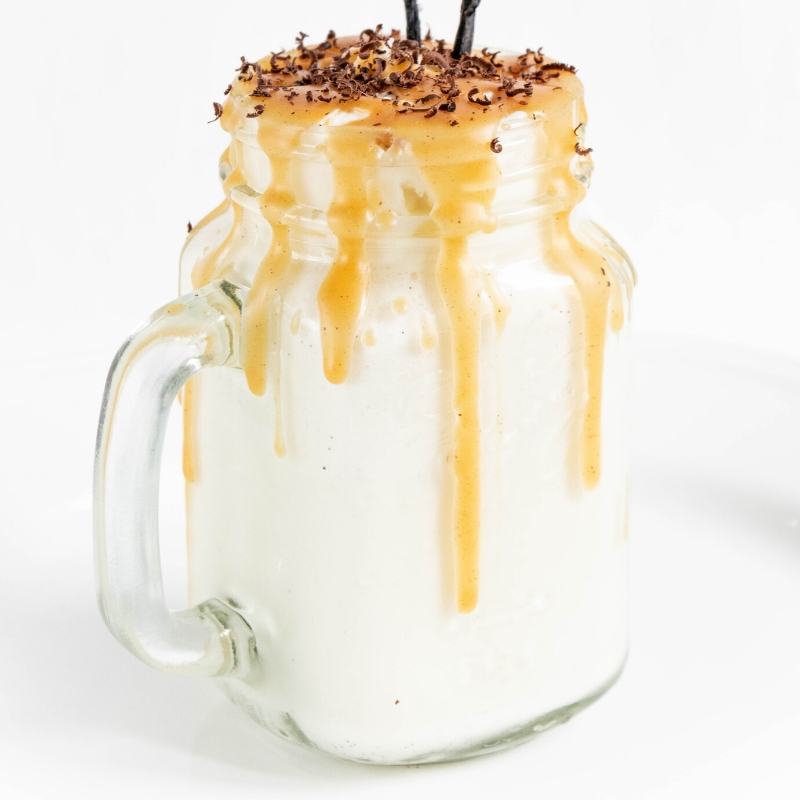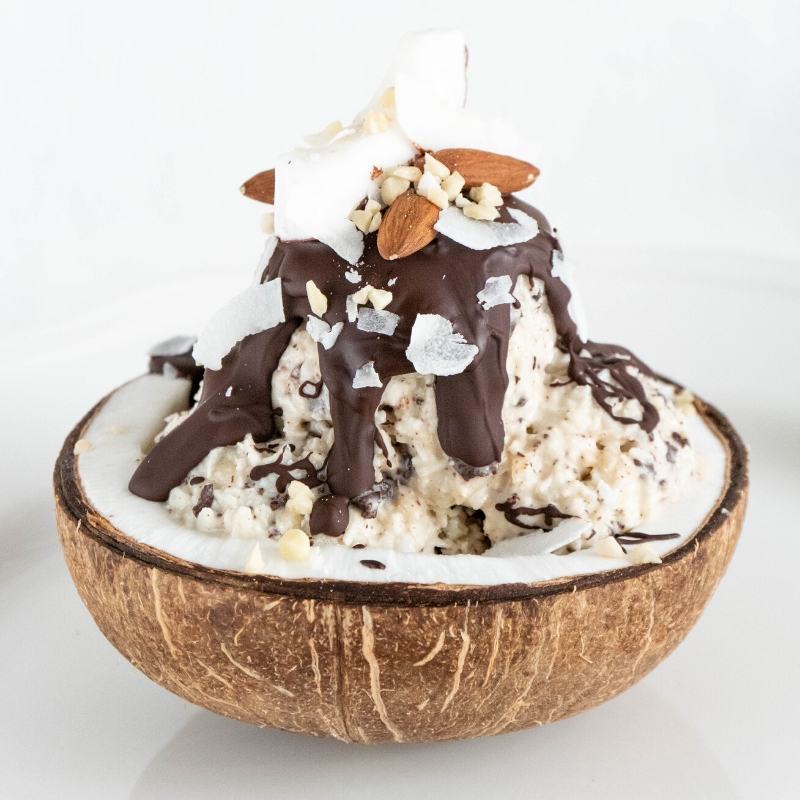Carbs That Don’t Count: What Net Carbs Are and How to Calculate Them
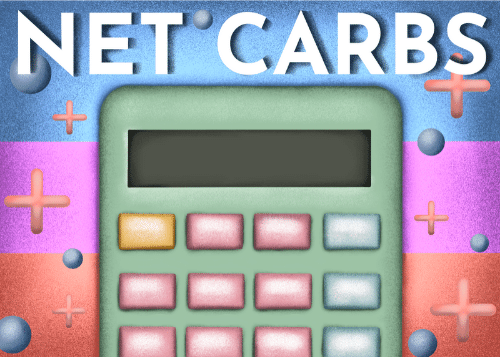
In a nutshell:
- “Net carbs” are types of carbs that your body can actually digest and that have an effect on your blood sugar and insulin levels.
- Net carbs are calculated by subtracting indigestible carbohydrates like fiber and certain sugar alcohols from the total carb count.
- If you follow a ketogenic diet, you should stick to a limit of about 20-30g net carbs per day.
The aim of following a ketogenic diet is to bring your body to switch it’s metabolic state from a sugar burner to fat burner.
This “fat-burning state” is called ketosis.
Being in ketosis has a lot of benefits, for example, it’s easier to burn body fat, you feel less hungry and there are many chronic diseases that can benefit from a ketogenic diet such as type 2 diabetes.
However, in order for the body to switch into ketosis, blood sugar and insulin levels must be kept low.
Carbs have a huge impact on our blood sugar and insulin levels, which is why they have to be limited to a minimum.
But not every type of carbohydrate is digested by our body in the same way – some carbs, fiber, and some sugar alcohols, for example, aren’t digested at all and thus have no impact on blood sugar or insulin levels.
These indigestible carbohydrates can be subtracted from the total carb count, as they won’t hinder your body from switching into ketosis.
Read on to learn which carbs don’t count and how you can calculate the “net carbs” value in your everyday life.
The content provided in this post is for informational purposes only and does not constitute medical advice. It is not intended to replace professional medical advice, diagnosis, or treatment. See further information.
1. What are net carbs?
Starch, the main carbohydrate found in potatoes, bread, and rice, for example, is composed of a single type of sugar molecule (glucose) that forms a long chain.
Our regular table sugar on the other hand is composed of two different sugar molecules: glucose and fructose.
If you eat starch, table sugar, or any other type of carbohydrate, the chain of sugar molecules is broken down and the individual sugar molecules are released into the bloodstream.
Your blood sugar spikes and insulin is released to transport the sugar molecules into your cells where they can then be used as energy.
Thus, all types of carbs that trigger this process (blood sugar and insulin spike) can be defined as “net carbs”.
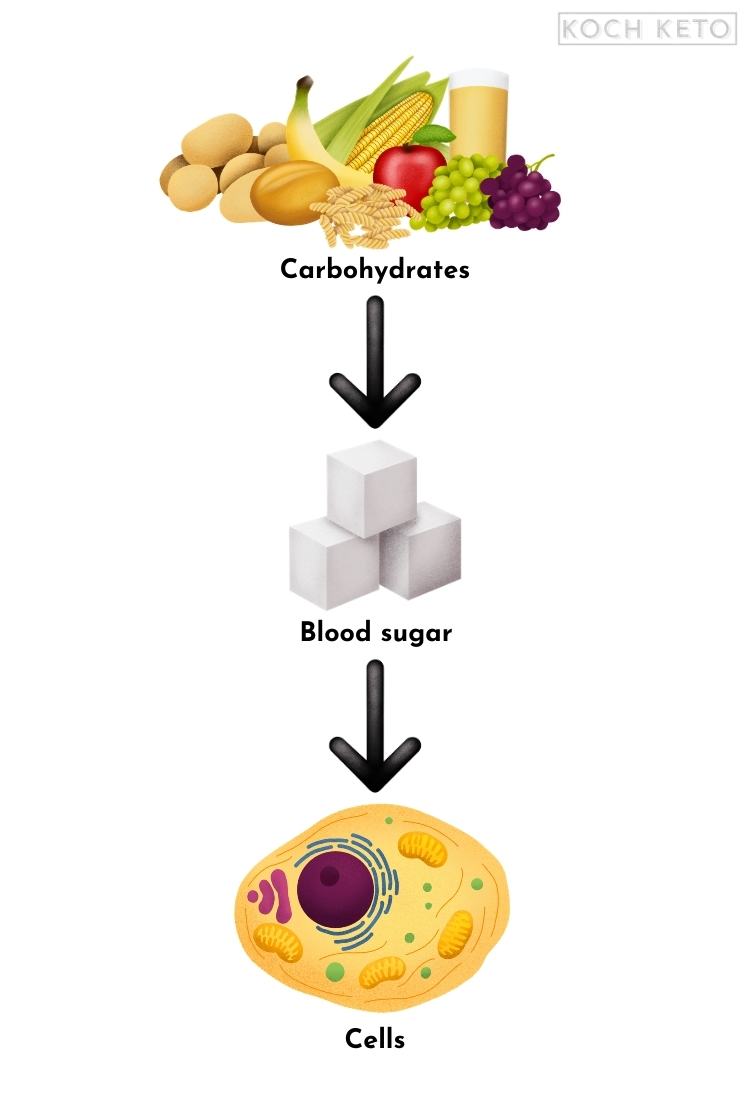
“Net carbs” are all carbohydrates that can be broken down by our body and subsequently increase our blood sugar and insulin levels.
Summary:
- All carbohydrates are made up of chains of individual sugar molecules.
- “Net carbs” can be digested by your body, which in turn leads to the breakdown of those chains of sugar molecules and a subsequent blood sugar and insulin spike.
2. Which types of carbs are not metabolized by the body?
Just like “normal” carbs, these non- or partially digestible carbohydrates are made up of chains of individual sugar molecules, but the difference is that our body is not able to break down these chains.
Grass, for example, is largely made up of a carbohydrate called cellulose.
In contrast to cows, humans lack the proper digestive system to be able to break down cellulose, which is why we get no nutritional value from eating grass whereas cows can live and thrive off it.
Cellulose is indigestible plant matter for us humans, which makes it by definition, a type of dietary fiber.
Dietary fiber is non-digestible
It doesn’t matter for our body if the cellulose comes from grass or fruits or vegetables – it still won’t be able to digest it, just like any other type of dietary fiber.
These types of fibers have no impact on our blood sugar or insulin levels and do therefore not count toward our daily carb limit on the ketogenic diet.
Simply subtract the amount of dietary fiber from the total carb count to get your net carb value.
Sugar alcohols: digestible or non-digestible?
But just because these products are “sugar-free”, that doesn’t mean they’re free of net carbs as well.
That’s because there are “good” and “bad” sugar alcohols, that are metabolized differently by our body.
Some sugar alcohols are completely non-digestible and have no impact on blood sugar or insulin levels whereas other ones are almost as bad as sugar.
That’s why it’s always important to take a look at the ingredient list of a “sugar-free” product to find out which sugar alcohol is used as a sweetener.

Gold medal for erythritol and mannitol
Both erythritol and mannitol have zero net carbs and neither has an effect on our blood sugar or insulin levels.
They are therefore the best sugar alcohols to choose on a keto diet.
Erythritol is our sweetener of choice for almost all of our sweet keto recipes as it tastes very similar to sugar, it can be used similarly to sugar, but it doesn’t pose the same health risks.
Silver medal for sorbitol, isomalt and xylitol
Granted, the effect on our blood sugar and insulin levels is not particularly strong, but it’s still there.
These sugar alcohols are still a far better choice than sugar, but they are not free of net carbs and are therefore not the best choice for the ketogenic diet.
Maltitol, the big fat loser
It increases blood sugar and insulin about half as much as regular sugar and has quite a bit of net carbs.
Unfortunately, it is commonly used in a wide variety of sugar-free products, because it is very cheap and behaves similarly to sugar.
Summary:
- There are types of carbohydrates, that our body cannot digest and therefore have no impact on our blood sugar and insulin levels.
- Examples for non-digestible carbohydrates are dietary fiber and certain sugar alcohols like erythritol and mannitol.
- Other sugar alcohols like xylitol and sorbitol have a small impact on blood sugar and insulin levels and have some net carbs.
3. How to calculate net carbs
Example:
100g (3.5 oz) of green asparagus contains 3.4g total carbs and 1.4g dietary fiber.
If you subtract the indigestible fiber from the total carb count, you’re left with 2g net carbs for 100g (3.5 oz) of asparagus.
Total carbs – indigestible fiber/sugar alcohols = net carbs
Summary:
- Net carbs are calculated by subtracting the indigestible components of a food (i.e. fiber and certain sugar alcohols) from the total carb count.
4. Best practices: How to find the most accurate nutritional information
A lot of nutrition labels in the US are all over the place – from very generous rounding errors to ridiculously small serving sizes – they have it all.
That’s why it’s important to follow a few simple rules to avoid overshooting your carb limit without even noticing.
#1. Use official sources
Different measuring methods may have been used or rounding errors may have occurred and you as a customer are left with confusing nutrition info that simply doesn’t make sense.
To avoid this, try to use official sources like the United States Department of Agriculture (USDA) or your country’s responsible ministry.
If those sources don’t have any information on the product you’re curious about, try to compare several similar products to each other and bring it down to a common denominator.
#2. Beware of small serving sizes
But there’s a huge problem with that kind of thing, especially if you follow a keto diet that requires some form of accurate carb tracking.
If you use more than the suggested serving size, you have to manually calculate how many carbs/calories, etc. a product has but to do that you’ve only got inaccurate numbers from the start.
The rounding error will compound quickly and you might be left with either totally unrealistic carb counts or some that are way too high.
We made an experiment and calculated the net carbs for 100g (3.5oz) mascarpone cheese from several different brands from Walmart and ended up with a huge range.
The “lowest-carb” mascarpone cheese had 0g net carbs per 100g (3.5oz) and the “highest carb” mascarpone cheese had a whopping 15g net carbs per 100g, even though both had the exact same ingredients (no added sugar with the latter)!
To avoid this, try to find products that list larger serving sizes, as those will likely be more accurate.
Summary:
- Accurate nutritional information can be a lot more difficult to find than one might expect.
Following simple rules like using official sources when possible and choosing larger serving sizes on a product when possible can help to avoid confusion.
5. Free PDF: Extensive keto & low carb foods list with net carbs
Next step:
Download the PDF files, print them out and hang them on your fridge to keep track of the carb count of a wide variety of keto foods!
Tip: Download the PDF to your phone as well – this way you’ll always have an overview of the best low carb foods when you’re on the road or grocery shopping.
FAQ’s
What are "net carbs"?
Non-digestible carbohydrates, like fiber and certain sugar alcohols like erythritol, don’t count as net carbs.
How can I calculate net carbs?
Total carbs – indigestible fiber/sugar alcohols = net carbs

